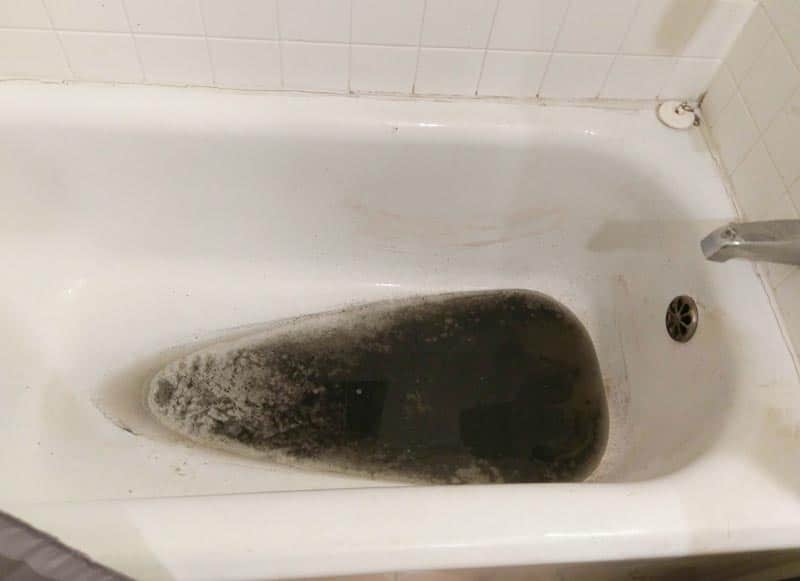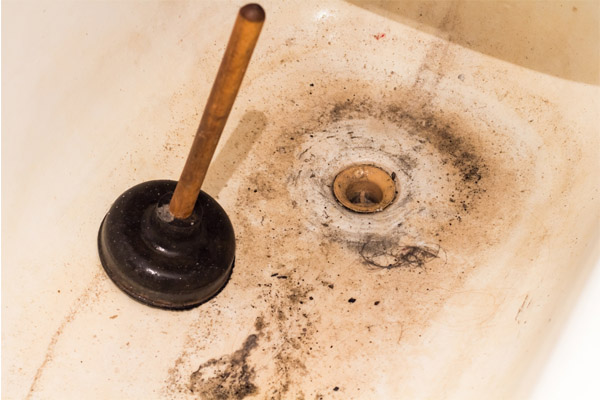We've uncovered this article pertaining to Why is Sewage Backing Up Into My Bathtub? directly below on the web and concluded it made sense to quickly share it with you in this article.

Sewer back-up in the bathtub can be a stressful and unhygienic trouble for any house owner. Not only is it inconvenient, but it likewise postures significant health threats and shows underlying issues with the plumbing system. Recognizing why sewer is coming up with the tub is vital for taking proper activity to resolve the issue efficiently.
Introduction to the Issue
Usual Factors for Sewage Back-up
Clogs in the Sewage System Line
Among the most common causes of sewage backup is an obstruction in the sewage system line. This can happen due to the accumulation of particles, grease, or foreign things in the pipes, avoiding correct flow and causing sewage to back up right into your tub.
Tree Origin Invasion
Tree roots looking for wetness and nutrients can infiltrate sewer lines through tiny cracks or joints. Over time, these roots can grow and expand, creating significant damages to the pipelines and leading to sewer backup problems.
Recognizing the Trouble
When sewer starts backing up into the tub, it's a clear sign of a problem with the drainage system. The wastewater that must be flowing far from your home is instead locating its back into your living space, which can lead to significant damage and carcinogen.
Possible Reasons
Numerous aspects can contribute to sewer back-up in the tub. From clogs in the drain line to issues with the plumbing facilities, determining the source is important for discovering a solution.
Aging Infrastructure
Older homes might have dated plumbing systems that are more vulnerable to rust, fractures, and wear and tear. As pipes age, they end up being much more prone to leakages and clogs, boosting the chance of sewer backup events.
Heavy Rainfall or Flooding
During durations of heavy rainfall or flooding, the sewer system may become overloaded with excess water, creating back-ups and overflows. This can lead to sewage supporting into bathtubs and various other fixtures inside the home.
Indications of Sewer Back-up
Foul Odors
Undesirable smells rising from drains or components, particularly in the shower room, might show sewage backup issues. These smells are typically solid and consistent, signifying a problem that calls for prompt attention.
Slow Draining Fixtures
Bathtubs, sinks, and commodes that drain pipes gradually or otherwise whatsoever could be experiencing sewer back-up. If multiple fixtures are influenced all at once, it's most likely that the problem stems from a typical point, such as the main sewage system line.
Gurgling Noises
Odd gurgling or bubbling sounds coming from drains when water is running in other places in the house are a measure of air caught in the plumbing system. This air accumulation can arise from sewer back-up and should be investigated without delay.
Health Threats Connected With Sewage Back-up
Contamination of Water System
Sewage back-up can contaminate the water supply in your house, positioning a severe wellness risk to you and your household. Exposure to contaminated water can result in intestinal issues, skin infections, and various other diseases.
Mold and mildew Growth
Dampness from sewage backup can create excellent problems for mold growth in your home. Mold and mildew spores can aggravate respiratory system troubles and create allergic reactions in delicate individuals, making punctual clean-up essential.
Spread of Disease
Sewage consists of hazardous germs, infections, and bloodsuckers that can trigger a variety of illness, including liver disease, cholera, and gastroenteritis. Entering into contact with sewage or infected surfaces puts you in jeopardy of infection.
Cleaning Up After Sewer Backup
Disinfection Procedures
Extensively sanitize and disinfect affected locations after sewer backup to get rid of unsafe bacteria and stop mold development. Use appropriate cleaning products and protective gear to make certain safe and effective clean-up.
Restoration of Influenced Locations
Repair any damage to flooring, wall surfaces, or fixtures caused by sewage back-up. Depending upon the extent of the damage, you might require to replace carpets, drywall, or other materials to restore your home to its pre-loss condition.
Immediate Actions to Take
Switching Off Water Supply
In the event of sewage backup, it's important to shut off the water supply to stop additional contamination and damages. Find the main water shutoff valve in your home and closed it off up until the problem can be fixed.
Speaking To a Professional Plumber
Handling sewage back-up is not a DIY job. Get in touch with a certified plumber with experience in handling sewage-related issues to assess the circumstance and perform required repair work or cleanings.
Staying Clear Of Contact with Contaminated Water
Till the sewage backup is solved, stay clear of contact with infected water to avoid the spread of microorganisms and microorganisms. Use safety equipment if you must be in the affected location and clean your hands extensively afterward.
Preventive Measures
Routine Upkeep of Drain Lines
Arrange regular examinations and maintenance of your drain lines to recognize and attend to potential problems before they escalate right into major troubles. This can consist of cleaning debris, evaluating for tree root breach, and repairing any damaged pipes.
Setting Up Bayou Shutoffs
Think about mounting backwater valves in your plumbing system to prevent sewer from receding right into your home throughout durations of heavy rainfall or flooding. These valves instantly close when water draws back up, safeguarding your residential or commercial property from contamination.
Appropriate Disposal of Household Waste
Avoid purging anything other than toilet paper and human waste down the commode to avoid clogs and blockages in the sewer line. Dispose of oil, oil, and other family chemicals effectively to decrease the danger of plumbing troubles.
Why Is Water Backing Up in My Bathtub When I Flush My Toilet?
What to do about a sewer line clog
First, don’t bother with plunging. No amount of plunging will dislodge the clog in a sewer line. The clog is too far away. Plungers are for clogs in the toilet itself, not the sewer line. Plus, the most likely causes of a sewer clog are:
Tree roots Flushed toys or feminine products Grease buildup Those items don’t move easily. And in the case of tree roots, the roots need to be cut out of the pipe and the pipe will need to be repaired.
You’ll need a closet auger. A closet auger is a type of plumber’s snake with a protective cover to keep from scratching the delicate porcelain toilet. If the clog is further down, you may need to remove the toilet or use one of your cleanouts to get to the clog.
We also recommend doing a video inspection of the drain to ensure that the cause of the clog has been completely removed. Otherwise, you could have the same problem again in a few days or weeks.
https://mspplumbingheatingair.com/blog/why-is-water-backing-up-in-my-bathtub-when-i-flush-my-toilet

I came across that blog post on Why sewage is coming up through your bathtub while doing a search on the search engines. Sharing is nice. You won't know, you may just be doing someone a favor. Thank you so much for going through it.
Call Today